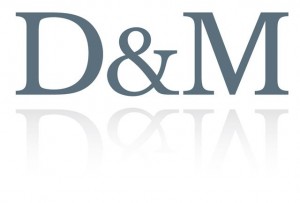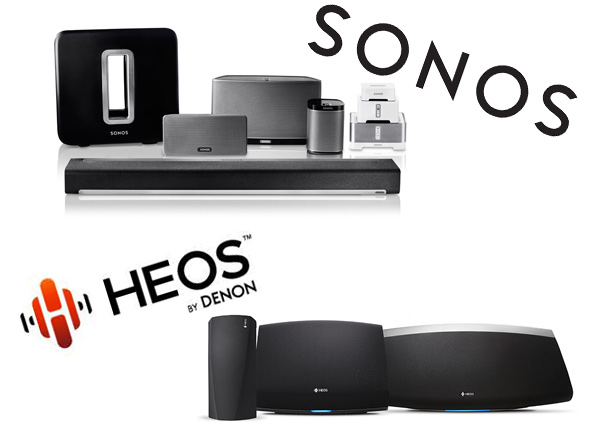Judge Makes Two Key Decisions
 In revisting the long-running saga of Sonos, Inc. vs. D&M Holdings, Inc. et. al., we find that after a series of skirmishes over scheduling issues – such as deadlines for filings and responses, and new claims and counterclaims filed – there appears to be a concerted effort by both parties to ratchet up the pressure. So far, it appears to our non-legally educated eyes that Sonos has a slight edge in this game, winning the scheduling skirmish and winning the right to expand the number of patents at issue.
In revisting the long-running saga of Sonos, Inc. vs. D&M Holdings, Inc. et. al., we find that after a series of skirmishes over scheduling issues – such as deadlines for filings and responses, and new claims and counterclaims filed – there appears to be a concerted effort by both parties to ratchet up the pressure. So far, it appears to our non-legally educated eyes that Sonos has a slight edge in this game, winning the scheduling skirmish and winning the right to expand the number of patents at issue.
But D&M has had some success as well. See where this case is at now…
As is usually the case with litigation in America, there is still a very long way to go to achieve any kind of resolution. As you probably already know, the case is one where Sonos alleges that D&M Holdings’ Heos wireless music system violates several of their patents. Currently, the case is scheduled to go to trial next year, in Fall 2017 – more than three years from when the original complaint by Sonos was filed.
The first step in any civil lawsuit is “discovery,” a process where both sides get to demand their opponent’s documents, interrogatories (written answers from the other party), depositions (oral interrogations of key executives of the other side), and more. Currently, the court has set a deadline of November 18, 2016 for the completion of all discovery. But as we’ve already seen, the schedule has been a little fluid, as the judge has been fairly liberal in agreeing to allow more time for each step by each party.
Mediation is Proceeding
Not only that, but as we noted in our report last September, the case has been scheduled for ADR – alternative dispute resolution, which is mediation designed to encourage both parties to negotiate a potential out-of-court settlement. The first conference for this mediation isn’t scheduled until May 12, 2016. Depending on how these negotiations go, the main case could be stayed and this process could take time to resolve on its own.
However, given the severity of the positions of the parties to this matter, it is hard to see any form of gentlemanly negotiation resulting in a mutually agreed-upon settlement. In that case, it is back to court.

D&M Files a Motion, So Does Sonos
Since our last report, where D&M lost their motion to disqualify Sonos’ attorneys, much has transpired. But only a couple of the events are worth noting – the rest being the typical back-and-forth nastiness of cases like this.
In November 2015, D&M filed a motion to request a leave (essentially a timeout) in order to have time to amend their answers to Sonos’ complaint both to change some of their responses and – more importantly – to add a counterclaim. In essence, D&M was suing Sonos for – you guessed it – patent infringement on nine of D&M’s patents.
Then, in January 2016, Sonos also filed a motion to request a leave to amend their complaint (which had already been amended once before to add more patents in dispute) to, in effect, adjust their patent claims. Sonos’ original action had asserted that D&M had violated four of their patents. In March, Sonos amended that original action to further assert violations of another eight of their patents for a total of twelve patents in dispute.
D&M Wins a Partial Victory
During a court conference in mid-2015 to discuss scheduling issues, Sonos notified D&M and the court that it intended to assert violations of another six-to-eight of their patents. D&M, as you might imagine, objected strongly to this latest add-on.
In that matter last year, D&M won a partial victory, as the judge drew the line, telling Sonos he would allow them to assert violations of another six-to-eight patents, but that they must then DROP the same number of claims. In a sort of “pick your poison” decision, the judge made it clear that he is limiting Sonos’ patent violation claims to cover no more than a total of twelve patents.
And Now a New Case: D&M Holdings, Inc. et. al. vs. Sonos, Inc.
Now in a new order announced just this month, the judge decided: D&M would be allowed to amend their answer and to assert new counterclaims; And, Sonos would be allowed to amend their complaint for a second time to assert new claims of violations on seven new patents (while simultaneously dropping claims on seven patents filed previously).
The judge also decided that he would sever the claims and counterclaims. In other words, a new case has been filed with the court, D&M Holdings, Inc. et.al. vs. Sonos, Inc. for claims of violations in the matter of nine D&M patents. That case…which is a completely separate court case and will result in a separate trial…is just getting started.
So depending on how you look at it, either they were both winners…or both losers.




Leave a Reply